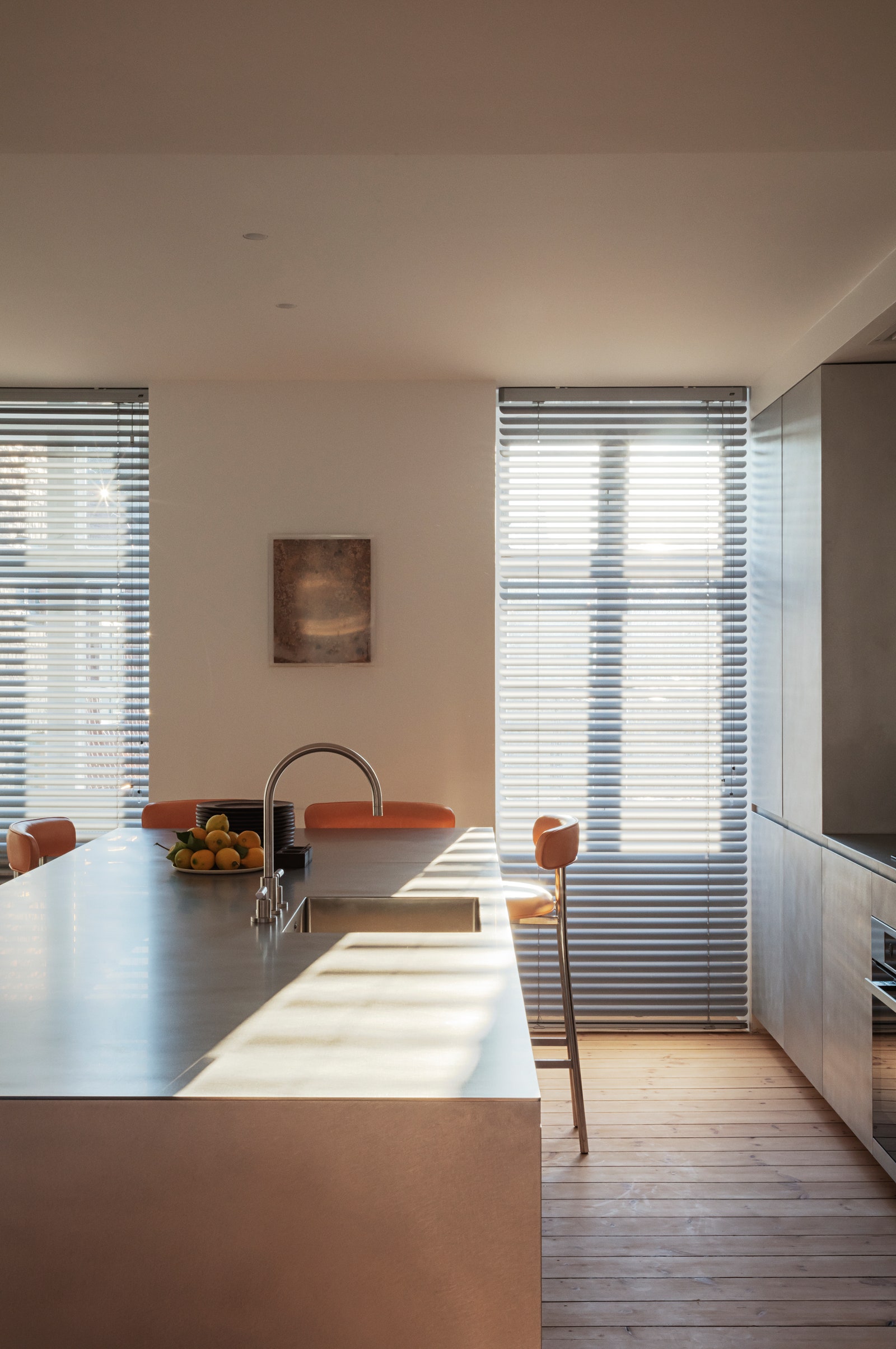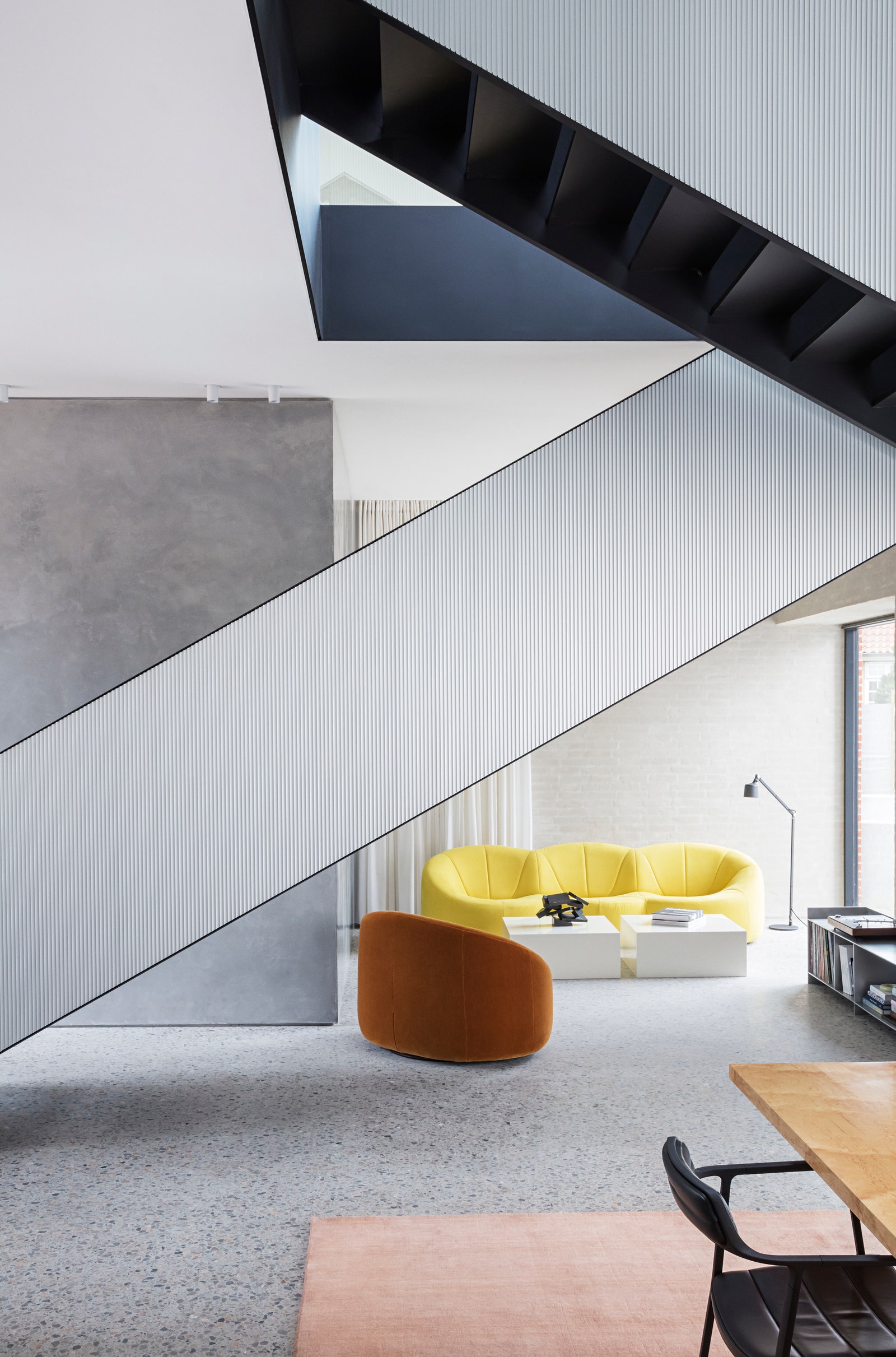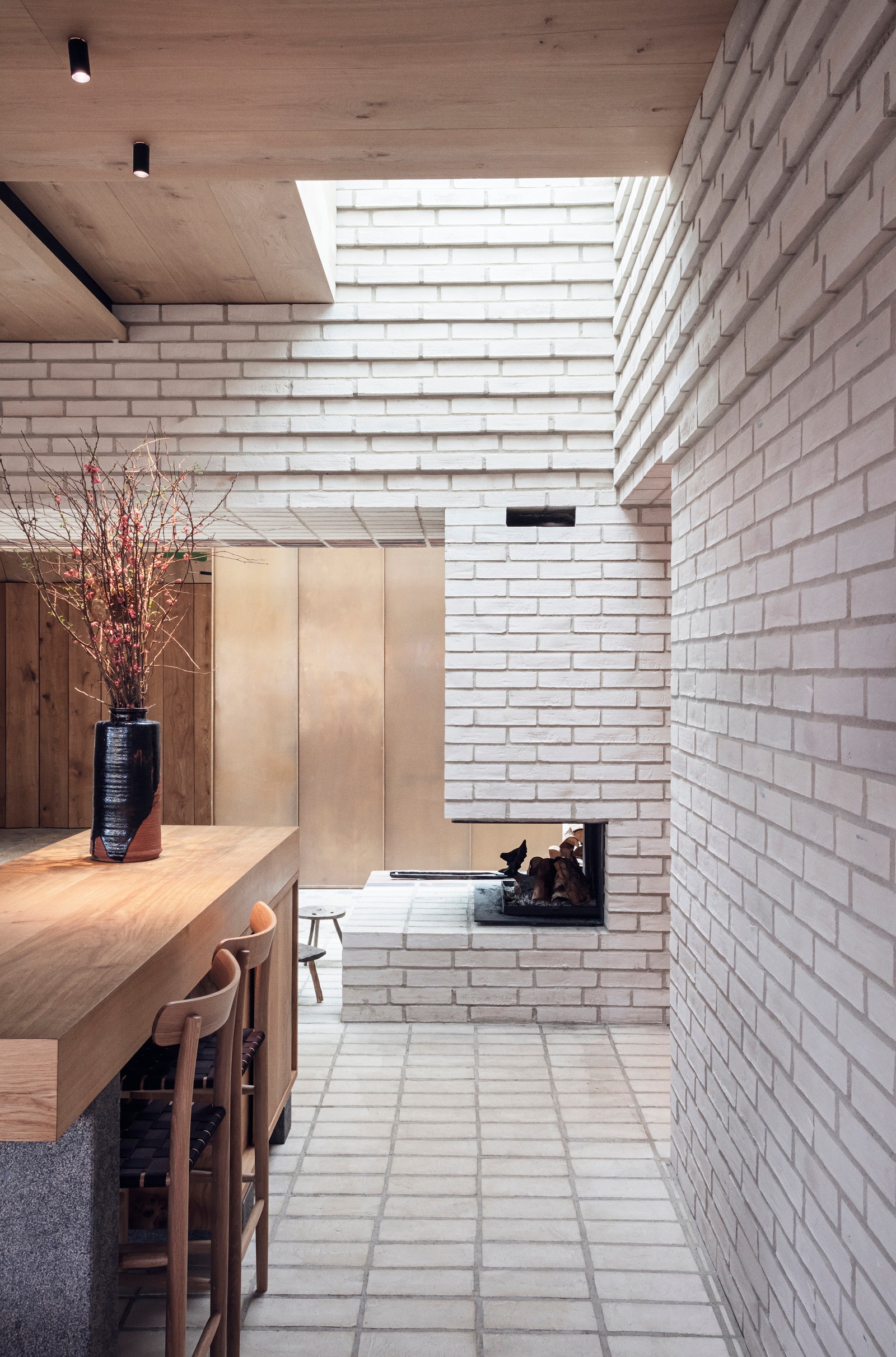At the Copenhagen studio of architect David Thulstrup, meetings are typically a tactile experience. To communicate his vision to clients, this Danish design star covers long tables with visuals, material samples, and ephemera—pebbled panels juxtaposed with chrome, yellow-plated zinc with caramel leather, blackened steel with glossy red lacquer. Touching each surface, seeing them side by side or loosely layered atop of one another, his guests can immediately experience the nuance and poetry that Thulstrup brings to his internationally renowned practice, which spans residential, hospitality, and retail projects. “As a Dane, design is about finding comfort and hygge, making space feel accessible and welcoming for all,” reflects Thulstrup, who cut his teeth working for AD100 Hall of Famer Peter Marino before launching his own firm in 2009. “I don’t create things that are bling-bling.”
The same is true at his own home, a 1,500-square-foot apartment that he thoughtfully renovated for himself and his partner, artist Martin Jacob Nielsen. Situated on the top floor of a 1920s functionalist building on Amager, a working-class island neighborhood turned hipster haven, the residence is now a showcase of coziness, simplicity, and subtlety—signature qualities that Thulstrup has achieved at Copenhagen projects such as the restaurant Noma, the boutique lodgings Vipp Chimney House, and the first flagship store for fashion designer Mark Kenly Domino Tan.
The kitchen features more cabinetry from Thulstrup’s Reform line and leather-clad Fonts stools from his collection for Møbel; artwork by Silas Inoue.
At home, what were once a warren of small rooms have been transformed into an open plan, with heightened door frames and a broad series of windows that frames city views. All molding and stucco have been stripped away, leaving a near total absence of ornament—a visual breath from the ever-changing palette of his professional life. “I always want to work with materials, but what I actually needed at home is a plain environment,” he reflects, noting the white walls and original pine floors, which he sanded down and finished with a natural soap. “This was an opportunity for me to push myself towards a greater understanding of texture and beauty.
“Part of the idea,” Thulstrup continues, “was to live with the things that I’ve created, to test them out.” As such, he and Nielsen got rid of essentially all their old furniture, replacing it with pieces of his own design. For the kitchen, he upholstered a set of his Font barstools for Møbel in chamois leather. The living area, meanwhile, features Font lounge chairs and his Mooner sofa for Common Seating, all clad in sheepskin. And paired with the bespoke dining table are more Font chairs still, only these are clad in Kvadrat’s tobacco-hued Vidar wool. They are complemented by brushed-aluminum closets and cabinetry, versions of his Plate kitchen and wardrobe system for Reform.
Vipp Chimney House, boutique lodgings in Copenhagen designed by Thulstrup.
Noma restaurant, which Thulstrup designed in collaboration with Bjarke Ingels Group.
Living with these pieces, Thulstrup has been able to witness firsthand not only how they evolve with use but how their visual properties shift depending on the time of day. Sunlight, whether direct or indirect, streams through the apartment’s many windows in the morning and afternoon, vividly capturing each material’s distinct color and texture. At night, however, an ambient glow takes hold. Set within each window—behind horizontal aluminum blinds that reach to the floor—Jasper Morrison globes cast a dynamic interplay of light and shadow. Complementing that aura, on any given evening, are the flickering flames of candles—a hygge staple. Thulstrup and Nielsen light them regardless if it’s dinner for two or dinner for 10. “I am always building on my Scandinavian design heritage, not just from a perspective of aesthetics but also from a more philosophical point of view,” the architect reflects. “It’s about modern simplicity, not power statements.”



